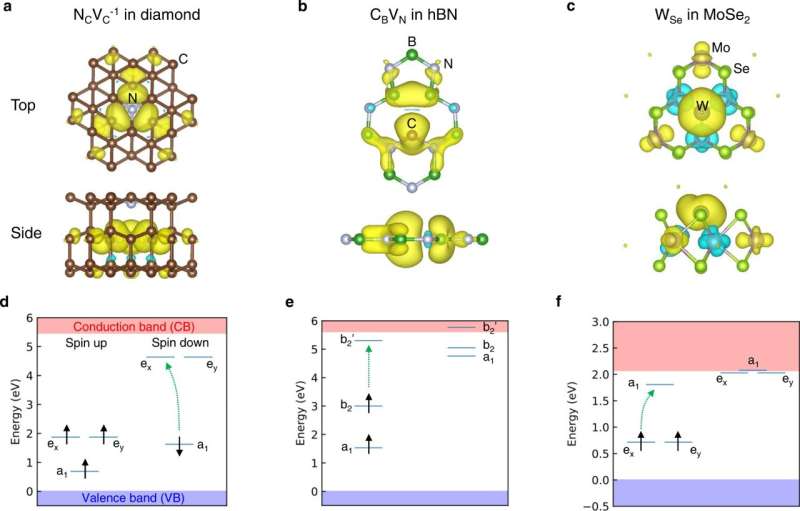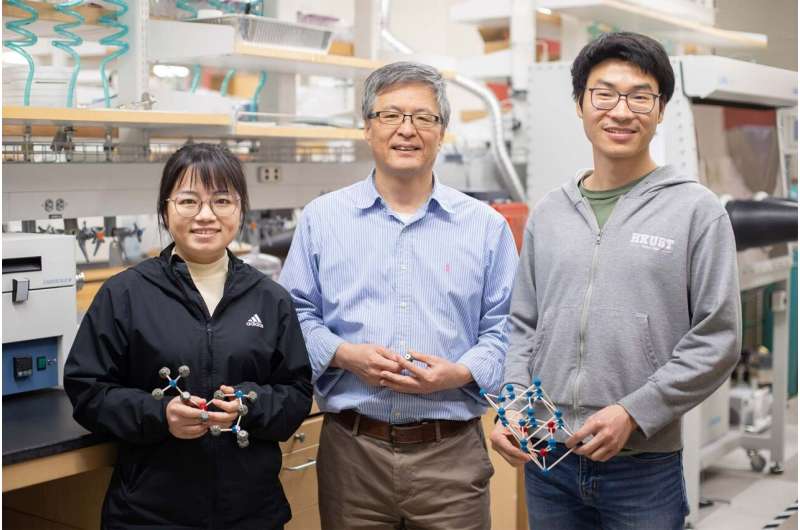This article has been reviewed according to Science X's editorial process and policies. Editors have highlighted the following attributes while ensuring the content's credibility:
fact-checked
peer-reviewed publication
trusted source
proofread
Team devises crystal-clear solution to quantum computing puzzle

University of Texas at Dallas researchers have developed a new approach that addresses challenges in the field of quantum computing and has the potential to revolutionize computing, communications and electronic security.
To make solid-state qubits, the basic information unit for quantum computers, a defect must be inserted into the solid material to control the spin states of electrons. Creating and positioning the defect, however, especially in the most commonly used solid material—synthetic diamonds—poses a major challenge.
UT Dallas researchers found that making qubits from thin, two-dimensional sheets of crystals called transition metal dichalcogenides (TMDs) instead of diamond can solve this problem. Led by Dr. Kyeongjae Cho, professor of materials science and engineering in the Erik Jonsson School of Engineering and Computer Science, the researchers published their findings online Dec. 6 in Nature Communications.
"We need to move away from using diamond to using a system that is 2D, like paper, to control defect positions. We investigated many different types of 2D materials and defects for this study," said Cho, who is the senior author.
Cho said the ability to control a qubit's properties allows researchers to develop a better way of maintaining the qubit conditions needed for two essential processes: entanglement and long-distance communication over optical-fiber cable networks.
Quantum entanglement is a phenomenon in which qubits are linked and can transmit information to one another regardless of their physical distance. It's the underlying process that enables quantum computers to process huge amounts of information simultaneously. But entanglement can only be maintained under precisely controlled conditions. Optimizing qubit properties using TMDs is a key step in this process and should help produce reliable quantum information processing and communication, Cho said.
TMD qubits provide another advantage over those made from diamond. Long-distance communication between computers takes place over optical-fiber networks and requires the signals to be in the form of infrared light.
"While diamond qubits must first be converted to the correct infrared wavelength, TMD-based qubits do not need to be converted," Cho said.

UTD researchers also collaborated with researchers from the Massachusetts Institute of Technology and other institutions to develop a method for fabricating smaller 2D TMD single crystal materials by geometric confinement. That research was published Jan. 18 in Nature.
Yaoqiao Hu, a materials science and engineering doctoral student at UTD and a co-author of both papers, became interested in the research while working on Cho's quantum computer materials project.
"I think quantum computing is very interesting—it can solve problems that our classical computers cannot solve," Hu said. "I want to use materials science to provide technology and make a contribution to the platform to achieve quantum computing."
Hu completed an internship at Texas Instruments last summer, and he expects to continue his work at the company after he finishes the last year of his doctoral program.
Xiuyao Lang, also a materials science and engineering doctoral student and co-author of the Nature Communications paper, enrolled at UTD in 2021 to study quantum technology.
"I think it's a very good opportunity for me to learn about quantum computing," said Lang, a Eugene McDermott Graduate Fellow. "It's a good start for my doctoral research."
More information: Yeonghun Lee et al, Spin-defect qubits in two-dimensional transition metal dichalcogenides operating at telecom wavelengths, Nature Communications (2022). DOI: 10.1038/s41467-022-35048-0



















